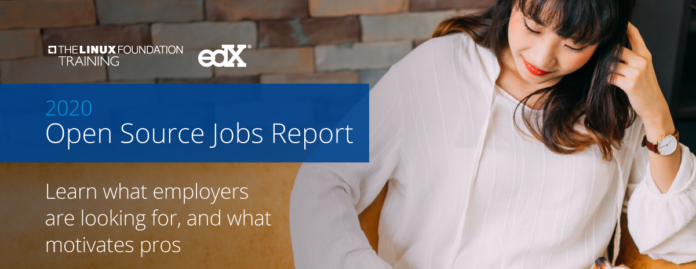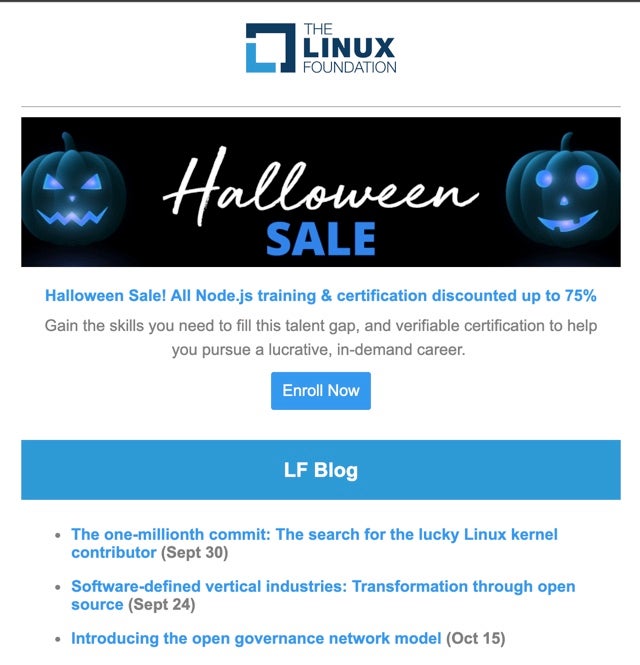Training Tuesday Edition – 1 Blog written by Craig McBride With “work from home” mandates and less opportunity to go to in-person classes, you might be looking for training opportunities you can start on today. We all need some help to get started on developing our skills. To make it easy for you, we’ve put together a series of blogs where you’ll…
Click to Read More at Oracle Linux Kernel Development
Oracle Linux 8 – Installation made easy with free videos
Oracle Linux 8 – Installation made easy with free videos
Training Tuesday Edition – 1 Blog written by Craig McBride With “work from home” mandates and less opportunity to go to in-person classes, you might be looking for training opportunities you can start on today. We all need some help to get started on developing our skills. To make it easy for you, we’ve put together a series of blogs where you’ll…
Click to Read More at Oracle Linux Kernel Development
Oracle Linux 8 – Installation made easy with free videos
Training Tuesday Edition – 1 Blog written by Craig McBride With “work from home” mandates and less opportunity to go to in-person classes, you might be looking for training opportunities you can start on today. We all need some help to get started on developing our skills. To make it easy for you, we’ve put together a series of blogs where you’ll…
Click to Read More at Oracle Linux Kernel Development
The history of an API: GitLab Runner and Podman
The history of an API: GitLab Runner and Podman
Here is one sysadmin’s journey through Podman and GitLab Runner integration
Pablo Greco
Tue, 10/27/2020 at 5:36am
Image
Photo by Michael Foster from Pexels
For a while, I’ve been working on a project that uses GitLab Runner with Docker as its executor. Since runners are hosted on CentOS 7, everything made sense—until we started looking at moving it to CentOS 8, and our world exploded.
The first thing we were thinking was, since Podman is a drop-in replacement, this should be easy (you can imagine the veracity of that statement yourselves). The truth was, Podman didn’t have the API that GitLab Runner used to manage the containers, so even if we could do everything manually, we weren’t there yet.
Topics:
Linux
Containers
Read More at Enable Sysadmin
Using an Ansible playbook to manage workstation and server updates
Using an Ansible playbook to manage workstation and server updates
In part two of this series on writing playbooks, we examine updates for servers and workstations. This playbook manages updates differently depending on the role the systems play on the network.
David Both
Mon, 10/26/2020 at 9:07pm
Image
Image by wiredsmartio from Pixabay
I have decided to streamline my update process for customer systems I support as well as for my own Linux devices. While a series of complex scripts have served me well for a long time, the advantages of using Ansible for this task are just too many to pass up.
Topics:
Linux
Linux Administration
Ansible
Automation
Read More at Enable Sysadmin
How to create an Ansible Playbook
Here in this introduction to Playbook creation, we examine the play that manages updates for a local Ansible controller machine.
Read More at Enable Sysadmin
2020 Open Source Jobs Report Reveals Spike in Demand for DevOps Talent
The Linux Foundation, the nonprofit organization enabling mass innovation through open source, and edX, the trusted platform for learning, has released the 2020 Open Source Jobs Report, examining demand for open source talent and trends amongst open source professionals.
Despite the pandemic, demand for open source technology skills continues to be strong. Companies and organizations continue to increase their recruitment of open source technology talent while offering increased educational opportunities for existing staff to fill skills gaps. 93% of hiring managers report difficulty finding open source talent, and 63% say their organizations have begun to support open source projects with code or other resources for the explicit reason of recruiting individuals with those software skills, a significant jump from the 48% who stated this in 2018. DevOps has also become the top role hiring managers are looking to fill (65% are looking to hire DevOps talent), moving demand for developers to second (59%) for the first time in this report’s history. 74% of employers are now offering to pay for employee certifications, up from 55% in 2018, 47% in 2017, and only 34% in 2016.
Exploring OpenShift Source-to-Image using Git webhooks
Exploring OpenShift Source-to-Image using Git webhooks
Check out OpenShift’s Source-to-Image feature using Git webhooks that’s sure to lure you in.
Ashutosh Bhakare
Sun, 10/25/2020 at 2:12am
Image
Photo by cottonbro from Pexels
OpenShift is an enterprise application platform based on the Kubernetes orchestration tool. It can deploy applications from a number of sources, including prebuilt images as well as from source. In this article, I will talk about Source-to-Image (S2I) and how to automate the entire process using Git webhooks. You can follow along and try it out yourself for free at the OpenShift Interactive Learning Portal.
Topics:
Openshift
Kubernetes
Containers
Read More at Enable Sysadmin







